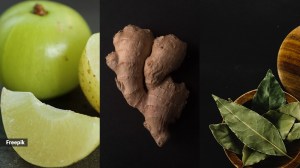Ghauri missile fire was lit in North Korea
WASHINGTON, April 11: Shadowy North Korea -- and not the usual suspect China -- is emerging as the principal source of technology for Pakist...

WASHINGTON, April 11: Shadowy North Korea — and not the usual suspect China — is emerging as the principal source of technology for Pakistan’s Ghauri missile, according to US officials and independent experts.
While Washington has been huffing publicly about North Korean missile technology supplies to countries like Iran, Syria and its Middle-East ally Egypt, it transpires that the US took quite lightly the line of supply opened in 1993 between Pyongyong and Islamabad, following a visit to North Korea by the then Pakistani Prime Minister Benazir Bhutto. Red-faced American analysts now say this channel has been more active than was previously suspected.
The experts now say Ghauri’s technological inputs came from cash and food starved North Korea. As it did in the case of Iran in 1993, Pyongyong may have provided Islamabad with blueprints, and possibly even a single copy of the No Dong medium range ballistic missile. According to intelligence sources, North Korea has a long and sustained history ofballistic missile development going back to the 1960s and linked to its own geostrategic perceptions vis-a-vis South Korea, Japan and the United States.
Its’ principle design outfit is called the January 18th Machine Factory located in Kagamari in the southern province of Pyongyang. This underground facility, which employs up to 10,000 people, has mastered missile technology by reverse engineering many Russian and Chinese missiles.
The missiles are then manufactured at specific missile factories like the 125 Factory, also known as the Pyongyang Pig Factory, the Number 26 Factory, and the 118 Factory. Military delegations from buyer countries like Egypt, Iran and Pakistan are believed to have visited the rocket assembly lines in these factories.
The technology transactions are believed to have been routed through companies like the Yongak-san Trading Company and the Changkwang Trading Company under the 2nd Economic Committee, the 15th Bureau (the General Bureau of Technology) in the Armed ForcesMinistry.
US proliferation experts like Gary Milholin say Islamabad has been carrying on a cloak-and-dagger operation in procuring the missile technology while successfully covering its tracks.
According to North Korean officials who defected from the Communist regime and testified before the US Congress last year, Pyongyong earned about $ 1 billion a year from missile exports, a significant sum for an impoverished country whose total GNP is estimated at only $ 22 billion. Young-hwan Ko, a senior official who defected, told US law-makers that North Korea considered exporting missiles crucial to its economy.
Proliferation experts say versions of the No Dong missile, first tested in 1994, has a range of anywhere between 650 miles to 900 miles, but is highly inaccurate. Part of the reason for this is that North Korea has conducted very few tests and has not refined the weapon because of the high costs involved. North Korea conducted only a few test firings around the coastal areas of the Yellow Sea in1993, and that too at night, to avoid US reconnaissance satellites.
According to defecting North Korean officials, Pyongyang is not unduly concerned about the missiles not being designed for surgical precision because the leadership sees it as a currency of deterrent and an effective strategic weapon designed mainly to have a political impact in a crisis or a conflict. South Korea sees North Korean missiles as crude, inaccurate terror weapons.
While North Korea’s primary and immediate adversary is its sister state South Korea, it’s military strategy involves targeting Japan. Both are key US allies in the region. US targets in South Korea would be easily covered by North Korea’s short range ballistic missiles (SRBMs) while the MRBM No Dong is aimed primarily at the more distant Japan.
Defecting North Korean officials have also revealed that North Korea is developing a longer range IRBM called Taepo Dong 1 and and ICMB called Taepo Dong 2 which can target US bases in Guam and Alaska. Experts fear that ifthe proliferation channel between North Korea and Pakistan continues to prosper, more technology transfers could be in the pipeline.
Meanwhile, Indian officials have been sceptical about US reports that North Korea alone provided technological inputs to Pakistan’s missile program, even as Washington tries to downplay the China angle ahead of President Clinton’s forthcoming visit to Beijing. Pakistan itself has acknowledged that it sourced its technology from several quarters.
Significantly, North Korean defector Ko revealed in his testimony that Pyongyang not only exports its own missiles but also those of China, quite probably to beat the US watch. Ko said Beijing had sent Silkworm ASCMs via rail to North Korea for subsequent transshipment by sea to Iran and Syria. For acting as missile middleman, Pyongyang earned enormous commissions.
Photos


- 01
- 02
- 03
- 04
- 05




























